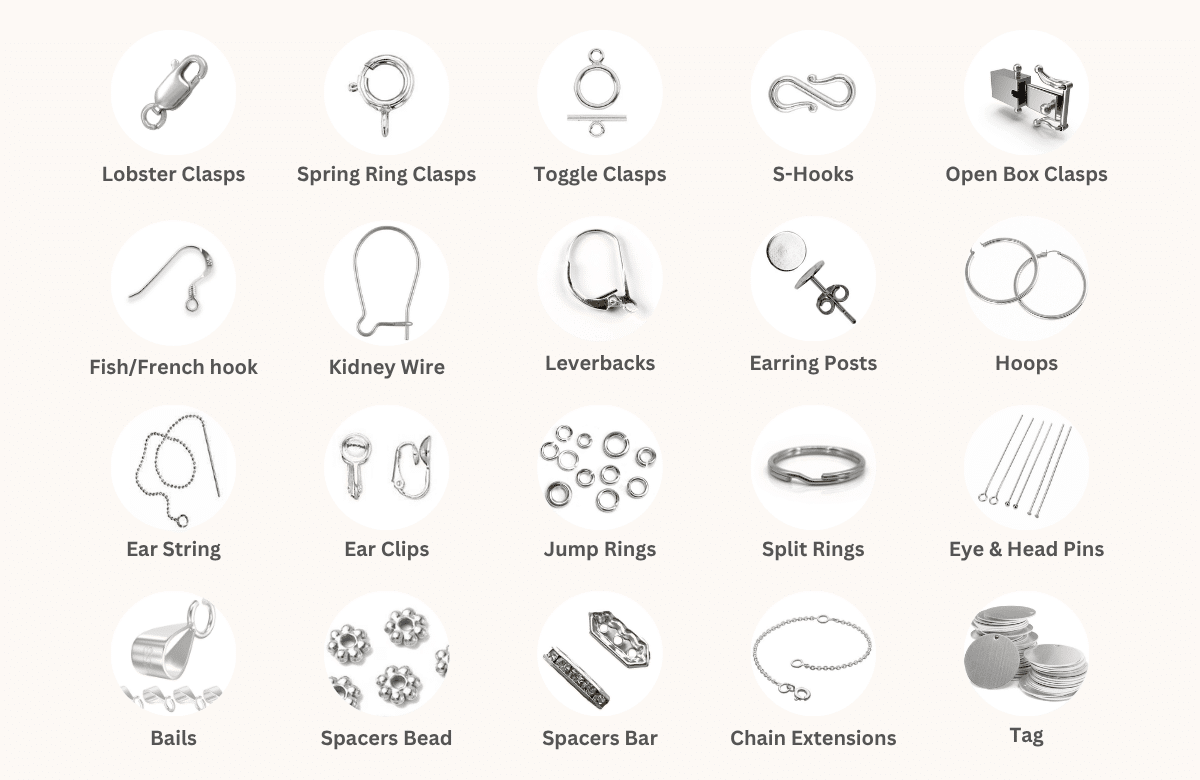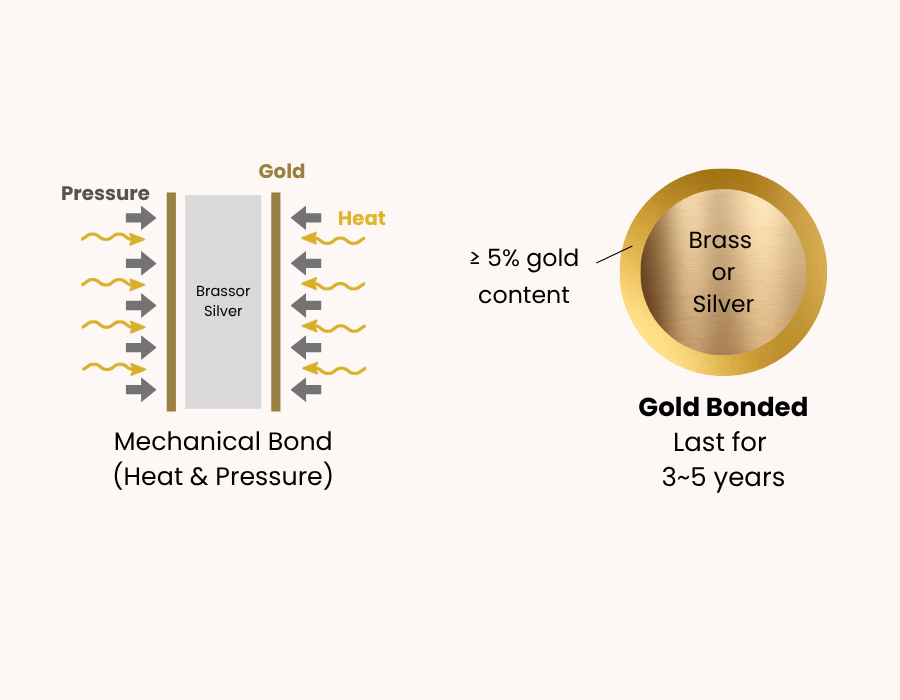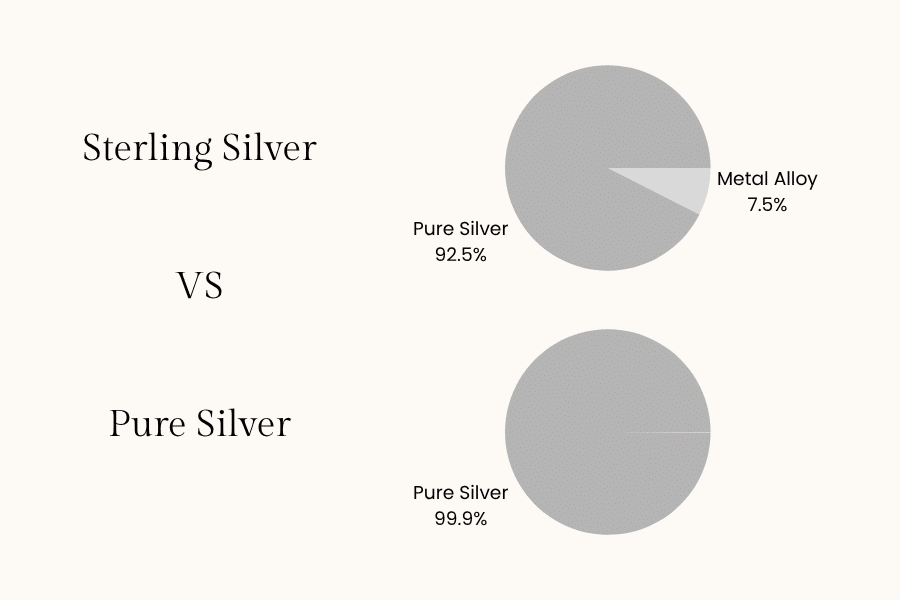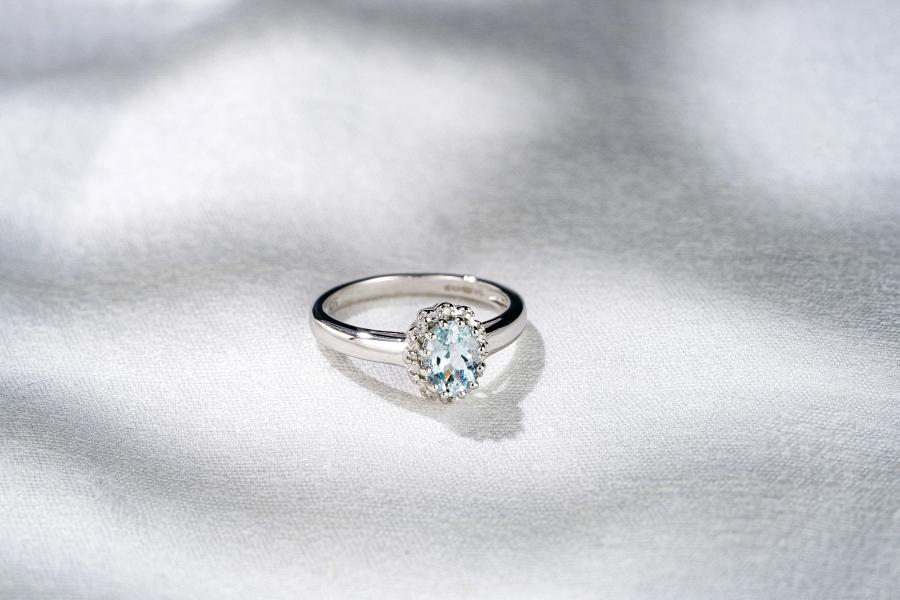As a jewelry enthusiast, especially if you’re a newbie to the jewelry industry, you may be wondering “what are findings in jewelry making” and “what do they do?”
In this comprehensive guide, we will help you through all you need to know, starting from jewelry findings definition, what they do, types of jewelry findings, and so on.
What are Jewelry Findings?
Jewelry findings are the small parts that help to join jewelry components together to form one piece. Examples are clasps, bails, ear wires, jump rings, tags, and split rings. They are essential to assemble, secure, and enhance jewelry pieces, such as connecting necklaces, attaching pendants, or fastening bracelets.
Basically, findings act as the “joints” of jewelries, ensuring wearability and structural coherence. For example, without them, chains wouldn’t clasp, earrings wouldn’t stay in place, and beads would fall off.
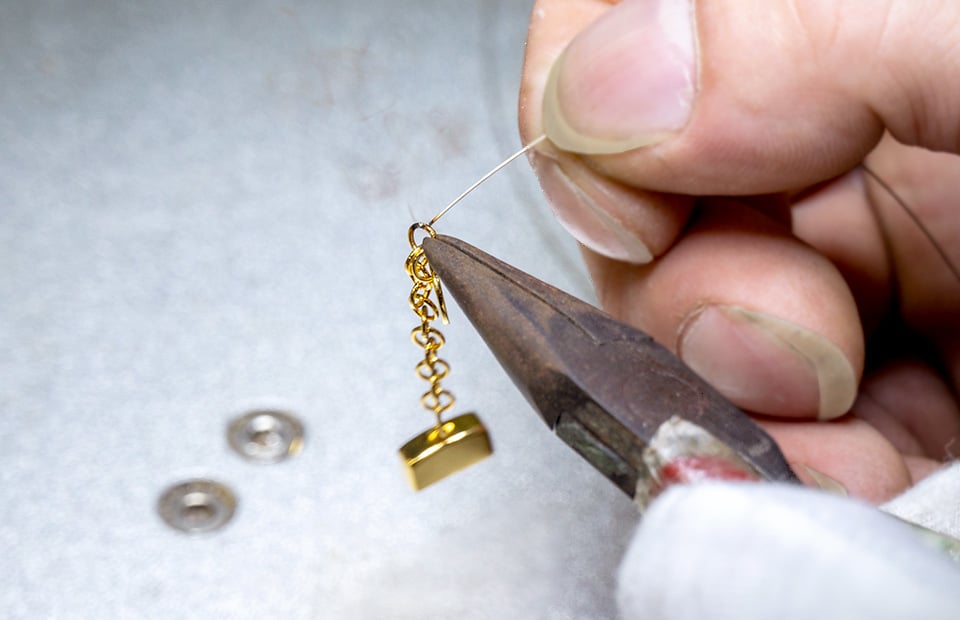
How do Jewelry Findings Affect Quality?
High-quality findings like stainless steel clasps or sterling silver gold wires, have the capability of withstanding tarnish and fading, ensuring longevity. Also, when findings are easy to secure and fasten, the jewelry is easier to wear, making the user love the jewelry more. To add to that, quality findings contribute to the overall jewelry look, particularly when they are beautiful bits like toggle clasps or engraved connectors.
Generally, customers perceive jewelry findings as indicators that show professionalism. A flimsy clasp indicates poor craftsmanship, undermining trust in the brand. Everyone is looking to invest in quality jewelry findings because it minimizes the risk of customers’ complaints, returns, and repairs, which can affect their brand and cost them money.
Why Jewelry Findings Matter?
Jewelry findings are the unsung heroes of jewelry designs, ensuring connectivity, wearability, longevity, and aesthetic appeal. Below are some of the reasons why jewelry findings are very important:
Enhancing Functionality
Findings ensure jewelry pieces are wearable and functional. For instance, clasps secure necklaces and earring hooks enable easy wear. Without these findings joining the different jewelry parts together, they won’t fit as one and they will be impossible to wear.
Improving Durability
High quality findings, especially when made with strong materials like stainless steel, sterling silver, brass, or gold, prevent breakage and wear over time. For example, gold-plated ear wires are less likely to bend despite frequent wear, thereby preserving the jewelry’s integrity for a long time.
Supporting Structural Integrity
Findings hold jewelry pieces together and maintain their shape, most especially for complex jewelry designs that need findings for cohesion. For example, multi-strand necklaces use spacer bars to prevent tangling, connectors join separate parts easily, and crimp beads ensure beads stay aligned in beaded jewelry.
Ensuring Safety
Secure findings prevent jewelry loss or damage, and also ensure that the user doesn’t get injured while wearing it. For example, sturdy clasps and earring backs are usually used for valuable pieces to protect them and to prevent any form of injury to the wearer.
Ensuring Comfort
Proper findings prioritizes the wearer’s comfort, ensuring that the jewelry is easy to wear and doesn’t cause any discomfort. They are made with lightweight materials, smooth edges, and secure closures to make the wearer super comfortable.
Common Metals Used in Jewelry Findings
The metals chosen for jewelry findings directly affects the jewelry durability, aesthetics, and overall functionality. Below are the most popularly used metals, each offering unique advantages.
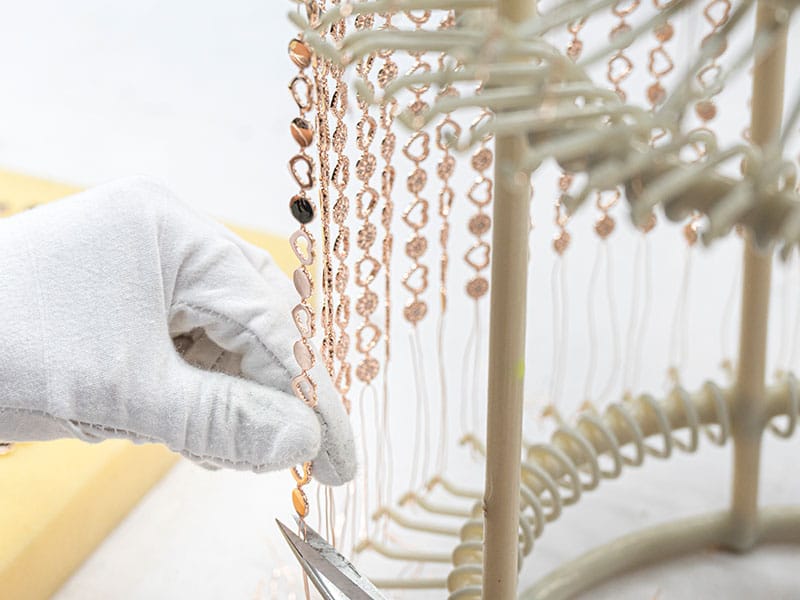
Stainless Steel
This metal is highly revered for its resistance to tarnish, rust, and corrosion. It fits so well in stainless steel jewelry and its exceptional strength ensures findings like clasps, chain extensions, and earring posts withstand daily wear.
Sterling Silver (925 Silver)
Sterling silver is a composition of 92.5% silver and 7.5% copper. The added copper makes it more durable and suitable for intricate findings like jump rings, ear clips, and decorative charms. Sterling silver jewelry, together with findings made with this metal offer a balance of luxury and affordability, with their timeless look.
Brass
Brass, which is a composition of copper and zinc, is malleable, easy to shape into ornate findings, and exudes a gold-like appearance at a very cheap price. Popular in the fashion world, brass jewelry seamlessly blends with findings made with the same metal, ensuring they retain their visual warmth.
14K/18K Gold
These gold alloys are further strengthened by metals like silver, copper, or zinc, making them ideal for delicate findings like ear wires, fish hooks, and hoops. 14K/18K gold are often used for their luxurious finish, yet hypoallergenic and tarnish resistant.
Common Jewelry Clasp Types
Clasps are essential for fastening necklaces, bracelets, and anklets, making sure the two ends close safely. Some are designed to be hidden while others are made to be visible and contribute to the jewelry design. Below are 5 widely used jewelry clasps types:

Lobster Clasps
These clasps operate with a spring-loaded mechanism and a small lever to open and close the jewelry. Lobster clasps are very secure, easy to use, and durable, and are often used in medium to heavy jewelry because of their tight grip. They are the best for chains with pendants and everyday wear, especially if you require a secure hold.
Spring Ring Clasps
They come in a circular metal ring with an internal spring that opens and closes to secure the jewelry. Spring ring clasps can be a bit hard to open and close because of their minimalist design. They are suitable for lightweight necklaces, delicate chains, beautiful bracelets, and any fine jewelry where simplicity is key.
Toggle Clasps
Toggle clasps have a two-part design – a decorative bar that slides through a circular ring. They are visible clasps perfect for bracelets, adding a decorative touch to their design. However, they can also be used for necklaces with chunky beads. Generally, toggle clasps are best for bold jewelry designs where the clasps also serve as a decorative element.
S-Hooks
These are S-shaped hooks that latch onto a jump ring or loop on the opposite end. They look simple with a rustic aesthetic, easy to adjust, but may loosen if not properly closed. S-hooks are best for adjustable-length necklaces, leather cord bracelets, and heavy necklaces with limited risk even if they lose their grip.
Open Box Clasps
Just as the name, these clasps have a box-shaped component with a hinged tongue that clicks into place. Open box clasps are often used in luxury jewelry, pearl strands, and pieces with multi-strand designs. They are very secure, have a sleek look, and usually embellished with gemstones or engravings.
Common Earring Findings Types
The type of earring findings you choose are important for your comfort and the earring design aesthetic. Below are 7 common earring findings types:

Fish/French Hook
This is a curved wire, resembling a fish hook designed to pass through a pierced ear. It’s generally the most common, but best suited for lightweight dangle earrings when worn with both casual and formal dresses. The Fish/French hook is easy to wear and can be used for metallic or beaded earrings.
Kidney Wire
This looks like a wire with a kidney-shaped curve that locks into a small notch to ensure tight grip. The kidney wire finding is great for earrings that hang a little below the ear. This includes activewear jewelry and medium-weight earrings, including gemstone drops & hoop earrings.
Leverbacks
Leverbacks are a comfortable and secure option for dangling earrings. These earring findings have a hinge closure that snaps behind the ear, keeps the earring from falling out of the earlobe, and makes the elongated part dangle freely. They are best for bridal or high-value jewelry requiring protection and chance to shine bright.
Earring Posts
This is a simple and straight earring finding that’s secured by a push-back or screw-on clutch. Earring posts have a minimalist design and are often made with hypoallergenic metals like 316L stainless steel, gold, or sterling silver. They are usually used for stud earrings, pearl earrings, and everyday wear.
Hoops
This is a continuous metal loop that goes through the pierced ear. Hoops can be hinged or fixed. While the hinged hoops require a clasp for easy wear, the fixed hoops require bending. They are ideal for statement earrings, including those with bold fashion statements.
Ear String
This is a thin, flexible wire or chain that’s gently inserted into the pierced ear, and added with dangling beads or skillfully crafted earrings. Ear strings are designed to have an adjustable length to create a floating effect. They are often used for experimental or bohemian designs.
Ear Clips
Ear clips are ideal for non-pierced ears and fashion-forward individuals who prefer costume jewelry & vintage-inspired pieces. They are a pressure-based clasp made with lightweight materials to prevent discomfort. These earring findings often have decorative fronts and screw-backs for security.
Common Jewelry Connector Types
Connectors play a vital role in keeping the jewelry structural integrity, design, and versatility. Discussed below are 3 major jewelry connector types and their applications.

Jump Rings
These are the perfect connectors when you want to join two items together without soldering them. Jump rings are small metal hoops (round or oval) that act as a connector in joining clasps, beads, and pendants to bracelets and chains. They are best for adjustable jewelry and pieces that require frequent modifications.
Split Rings
Split rings are slightly different from jump rings, as they offer more security. Instead of opening and closing the ring to connect different jewelry parts, you thread them around until they are connected. They are best for high-stress pieces, outdoor accessories, and jewelry with valuable components that must not fall off.
Eye & Head Pins
Eye pins are metal wires with a preformed loop at one end and a flat tip. Head pins are similar to eye pins, but with a decorative head (ball-shape or gem) at one end. They are often used for creating bead dangles in earrings and linking beads in multi-strand designs.
Special Jewelry Findings
There are some other unique types of jewelry findings that enable intricate designs and personalized touches to jewelry designs. They include:

Bails
A bail is a popular finding used to attach pendants to necklaces without the need for metalsmithing or soldering. Bails allow the pendants to be secure to the chains, and hang centrally, making them the focal point of the design. They are best for statement pedants, heirloom pieces, and interchangeable charms.
Spacer Beads
Spacer beads are special findings used to separate gemstones or pearls in necklaces and bracelets. These are small beads placed between larger beads to avoid friction, thereby creating a rhythmic pattern in beadwork. They are best integrated in multi-gemstone jewelry designs or bohemian styles.
Spacer Bars
Spacer bars are flat or curved bars used to keep beads appropriately spaced out in jewelry with multi-strand bead designs. These findings prevent tangling in layered necklaces or bracelets, and ensure beads align in symmetrical patterns. They can be made to be invisible or act as a decorative element to your jewelry.
Pin Backs
These are fasteners that connect pins to jewelry pieces. They can also be used to attach brooches or name tags, making them important when crafting customized designs. Pin backs are usually made with hypoallergenic materials like titanium because of people with sensitive skin.
Chain Extensions
These are short chain segments with clasps or jump rings that help to change jewelry length. Chain extensions can be used to resize necklaces or bracelets, repair broken chains, and create layered looks. They are best for customizable jewelry, maternity necklaces, and minimalist layering pieces.
Tags
Tags are flat, stamped, or engraved metal pieces used for personalization or decoration. They can feature names, dates, or symbols that are peculiar to the jewelry owner. These findings are often used for personal gifts, stackable bracelets, and urban-style necklaces.
How to Keep a Necklace Pendant from Flipping Over?
A flipping pendant can disrupt the necklace aesthetic and frustrate the wearer. Here are practical solutions on how to keep a necklace pendant from flipping over:
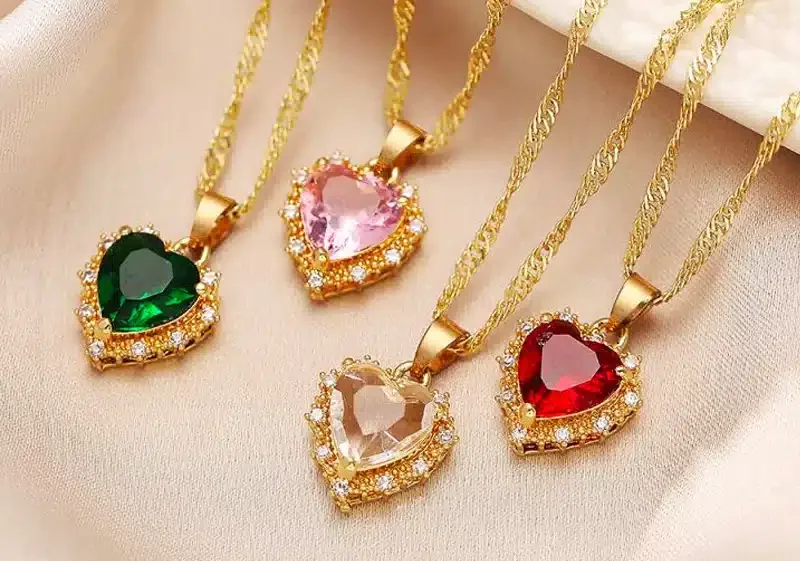
- Use a Balanced Pendant Design
Asymmetrical and top-heavy pendants are prone to flipping because of their shape and uneven weight. A trick to avoid this is to choose pendants with symmetrical shapes like circle or square, and ensure all the parts are evenly weighted. A flat pendant is less likely to flip than a teardrop-shaped pendant.
- Add a Bail or Weighted Clasp
Findings like a bail and clasp are capable of holding the pendant in place, ensuring a sturdy jewelry structure. While the bail anchors the pendant, a weighted clasp can be used as a counterbalance, making sure the pendant doesn’t flip.
- Adjust the Pendant’s Placement
A pendant that’s placed too low from the chest or used on a long necklace is bound to flip more freely because of the distance from the upper-body weight. To solve this, shorten the necklace length or center the pendant higher–near your collarbone.
- Use a Rubber Stopper or Bead Near the Pendant
While the pendant is susceptible to move and possibly flip during motion, you can use a small rubber stopper or bead near the pendant to add friction. This will help limit the movement. However, it’s imperative that you don’t use a stopper or bead that will distort the jewelry’s design.
- Select a Rotating Bail
For compass pendants and charms that are meant to move, use a rotating bail to keep the pendants from getting stuck upside down. They will be allowed to move freely, as the rotating bail positions them back rightly if they almost get stuck.
What are the Most Essential Jewelry Findings for Beginners?
New to the jewelry findings world? These are 4 crucial findings that are needed for making simple, versatile jewelry:
- Chains: They form the base of various jewelry pieces, such as necklaces, bracelets, and anklets.
- Jump Rings: These small rings are essential in connecting clasps, pendants, and charms.
- Head and Eye Pins: They are important for creating bead dangles, earrings, and charm links.
- Clasps: These connectors are critical in joining necklaces, bracelets, and anklets.
How to Choose the Right Jewelry Findings?
In selecting the right jewelry findings, these are salient factors you must consider:
- Jewelry Type
Typically, the type of jewelry determines the findings you will use. For example, necklaces require secure clasps and durable connectors like jump rings, while earrings require lightweight findings like fish hooks and kidney wire to balance elegance with comfort. Ensure the findings match with the jewelry’s purpose.
- Jewelry Material
Findings must align with the jewelry’s metal to prevent corrosion and discoloration. For instance, gold-filled findings should be used with gold-plated jewelry and sterling silver or rhodium-plated findings should be paired with sterling silver jewelry. Avoid mixing different metals unless demanded for the jewelry design.
- Design Requirements
The overall jewelry design impacts the type of findings you choose. Hence, why it’s advisable to partner with a custom jewelry manufacturer with expertise in bringing your vision to life. For example, minimalist jewelry designs should be paired with discreet findings that may even be invisible, while glamorous jewelry can be paired with decorative or engraved findings.
What Jewelry Finding Materials are Hypoallergenic?
With jewelry findings explained, it’s important to note that not all finding materials can be used by everyone. For people with sensitive skin, it’s recommended to use jewelry findings made with hypoallergenic materials, such as:
- Gold: Gold metals like 14K and 18K are strong and alloyed with hypoallergenic metals like copper or zinc, which are ideal for sensitive skin.
- Sterling Silver: Composed of 92.5% pure silver and 7.5% copper, sterling silver doesn’t contain any metal that can cause reactions to the skin.
- Platinum & Rhodium: They belong to the Platinum Group Metals (PGMs) family, which are naturally hypoallergenic and corrosion-resistant.
- Titanium & Niobium: These are biocompatible metals used in medical implants. They are lightweight, durable, and verified to be safe for piercings and contact with the body.
- 316L Stainless Steel: This is a surgical-grade steel that resists rusts and allergies. It’s commonly used in various jewelry findings because of its tarnish-free feature.
Conclusion
The importance of jewelry findings cannot be overemphasized, as they contribute to the overall look and safety of jewelry pieces. We’ve discussed several types of jewelry findings, including common types of clasps, earring findings, connectors, and some other special findings. Overall, it’s important that you consider the jewelry type, jewelry material, and design requirements to choose the perfect jewelry finding.
